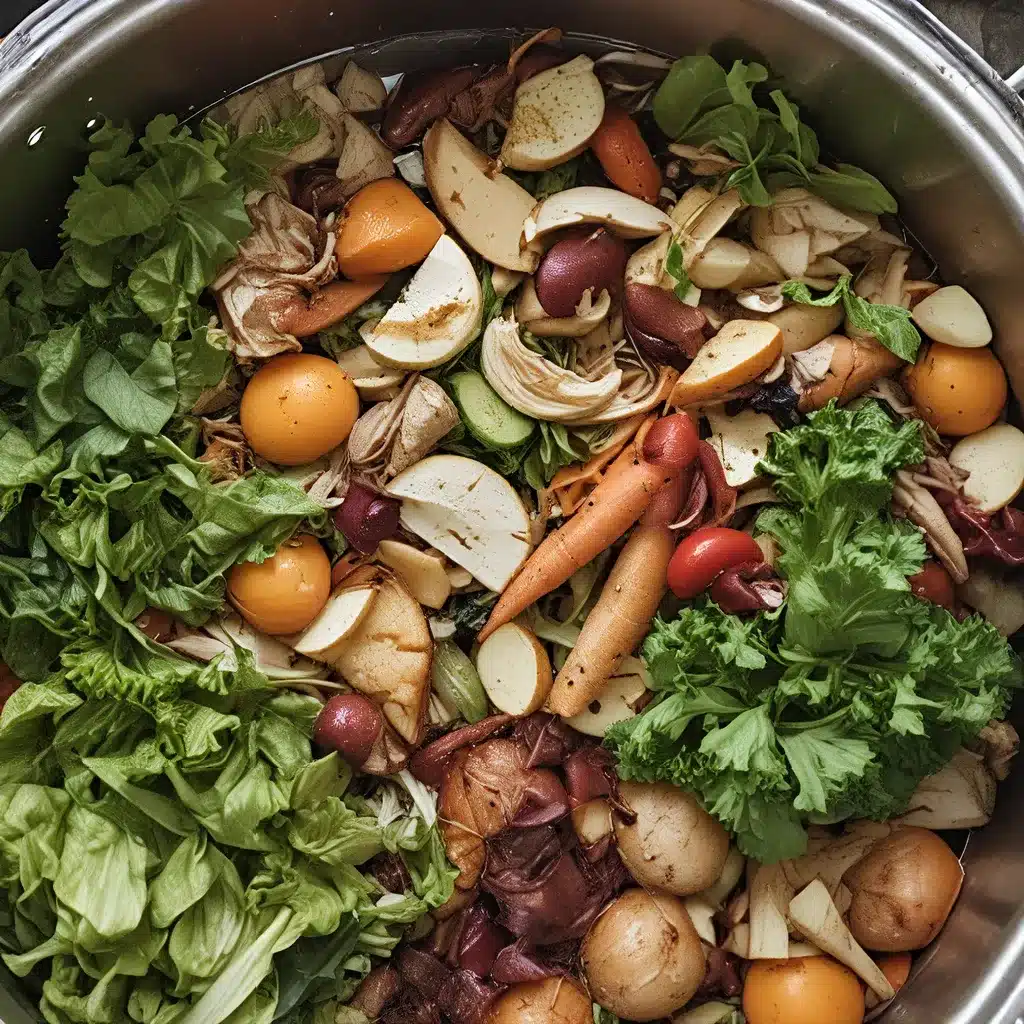
As a self-proclaimed food waste warrior, I’m always on the lookout for ways to minimize the amount of perfectly good food that ends up in the trash. It’s an issue that’s been weighing heavily on my mind, especially as I learn more about the staggering scale of food waste worldwide.
According to the Tiffin Bitesized blog, food waste is a “huge issue for any community, but particularly in developed nations.” We’re talking about imperfect veggies being dumped by the truckload, supermarket items past their ‘best before’ dates being tossed, and consumers throwing out leftovers or anything that’s more than a day old. It’s absolutely shocking when you consider that much of the world relies on food aid just to get a single meal a day.
Now, I know I’m not living on the breadline by any means, but that doesn’t mean I’m not incredibly thrifty when it comes to food. I plan ahead, I substitute ingredients, I’m not fussed about best-by dates, and I freeze everything that can be frozen. And let me tell you, that apple core and peel jelly recipe I found on the Tiffin Bitesized blog? Pure genius. Talk about turning trash into treasure!
Rethinking Food ‘Waste’
The food revolution is definitely upon us, and more and more people are waking up to the importance of being mindful about where our food comes from, how it’s produced, and the impact it has on the planet. Part of that revolution involves rethinking what we consider ‘waste’ and finding creative ways to maximize every bit of the foods we bring into our homes.
Sure, not everyone is going to go to the trouble of freezing apple cores and making jelly. But it’s a great example of how, when times get tough, people can get really innovative. And let’s be real – we all need to take a little more responsibility when it comes to reducing food waste.
Tapping into Untapped Resources
One of the things that really inspired me to start paying closer attention to food waste was learning about organizations like OzHarvest, a nationwide Australian food rescue operation that collects excess perishable foods and distributes them to over 500 charities. Their website is a fascinating deep dive into the realities of food insecurity, both in our own backyard and around the world.
It made me realize that the ‘waste’ we so easily toss out could actually be a valuable resource for those in need. And it’s not just OzHarvest – there are countless initiatives around the world working to redirect ‘waste’ food to those who need it most.
But it’s not just about the big organizations. As individuals, we can all do our part to reduce food waste, whether it’s by freezing those apple cores, repurposing stale bread, or simply being more mindful about what we’re buying and consuming. After all, every little bit counts when it comes to creating a more sustainable food system.
The Power of Repurposing
One of the things I love most about the mission to reduce food waste is the creativity and innovation it inspires. Take that apple core and peel jelly, for example. Who would have thought that something as simple as apple scraps could be transformed into a delicious, pectin-free spread?
But it’s not just fruit scraps – there are so many ways to breathe new life into all sorts of food ‘waste.’ Stale bread becomes breadcrumbs or crackers. Veggie scraps get tossed into the compost or worm farm. And let’s not forget about homemade butter, which the Tiffin Bitesized blog highlights as an easy way to use up that leftover cream.
The key is to get creative and think outside the bin. What can I do with this instead of just throwing it away? That’s the mindset that’s going to help us all become more sustainable, earth-friendly home cooks.
Lessons from the Past
You know, it’s interesting to look back at how people used to deal with food scarcity and limited resources. Take the 1964 documentary film “The Gleaners”, for example. The film explores the centuries-old practice of gleaning – the act of collecting leftover crops from farmers’ fields after the harvest.
It’s a playful yet eye-opening look at how people throughout history have found ingenious ways to make use of what others would consider waste. And it got me thinking – what other lessons can we learn from the past when it comes to minimizing food waste and maximizing the foods we have access to?
Perhaps we need to take a page out of our grandparents’ playbooks, when times were tougher and every scrap counted. Or maybe we can look to other cultures and traditions that have long valued resourcefulness and sustainability when it comes to food. The possibilities are endless, and I’m excited to keep exploring.
A Mindset Shift
At the end of the day, reducing food waste really comes down to a mindset shift. It’s about being more intentional, more thoughtful, and more creative with the food we bring into our homes. It’s about recognizing that those apple cores and veggie scraps aren’t just trash – they’re untapped resources waiting to be transformed into something amazing.
Sure, it might take a little more time and effort. But when you consider the massive scale of food waste globally, and the countless people who struggle to put food on the table, I’d say it’s a worthwhile investment. Not to mention the environmental benefits of reducing what ends up in landfills.
So the next time you’re tempted to toss that slightly wilted produce or those leftovers that have been in the fridge a little too long, stop and think. What could you make with that? How could you breathe new life into it? It might just be the start of a delicious, earth-friendly adventure.
And who knows – you might even discover your new favorite recipe in the process. After all, as the saying goes, “Waste not, want not.” Time to put that motto into practice, don’t you think?
Home Cooking Rocks is the place to be for all your food-related inspiration and know-how. Check out our wide range of recipes, tips, and resources to help you become a master of minimizing waste and maximizing flavor in the kitchen.






